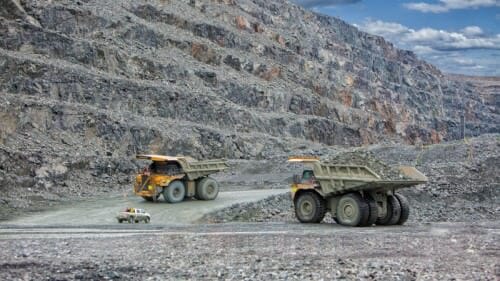Tele2, the Swedish telecom operator, and Foodora, the Q-commerce company, have entered into a partnership to pilot autonomous droids connected with 5G for food delivery. It is a first step towards the future of 5G and IoT-enabled home deliveries in Sweden.
Business drivers & existing challenges
More people are stuck at home due to Covid-19, driving the need for home delivery services. Social distancing also limits people’s options to dine out, driving the need for restaurant delivery to home. The food also needs to be delivered fast to the customers, before it gets cold.
To meet this enormous pandemic-driven demand, Foodora offers food delivery services to the home. It has a challenge in hiring a lot of new people to meet this demand. So, it started working on finding better technology-based solutions to meet its growing needs.
Tele2 & Foodora proposed 5G and IoT solution
The technology solution that Foodora started trialing is self-driving robots (droids) to meet its customer’s demand for food delivery. It partnered with Yape, the manufacturer of the Doora, the Droid.
The Droid supports 5G connectivity. So, Foodora partnered with Tele2 to provide low latency and real-time communications to the Droid Doora to enable it to go anywhere. By connecting to 5G network, the Doora droid can perceive its surroundings, communicate, and create a situation-adapted service – self-driving home deliveries. It also enables it to communicate order details and optimal delivery routes in real-time.
Doora Droid has a camera that sends information via 5G in real-time to foodora, tracking and tracking the robot while quickly sending data to and from Doora. With 5G and IoT, Foodora will also be able to measure several things, such as how to optimize delivery routes for the droids and heat mapping when the Droids are fully integrated into their systems.
When the autonomous droids are on the streets, engineers from the control room will be able to receive a signal if there are obstacles or situations that Doora Droid cannot yet handle. In such scenarios, the engineers will have the ability to steer Doora via 5G connectivity remotely.
In the pilot phase, an engineer will accompany the Doora Droid, similar to a co-pilot, to ensure everything is managed smoothly. Also, engineers from Yape will be in the control room watching the Droid Doora and ready to steer it remotely through 5G connectivity, if required.
The first pilot is a mock delivery to make sure everything works.
Tele2 and Foodora use case current status and next steps
The first step is already underway (as of Mar 2021), where Foodora is testing Doora Droid in a pilot mode. In this phase, its goal is to build full integration between Doora Droid and its back-end system to enable direct communication.
Additionally, Foodora aims to prove to Transportstyrelsen, the Swedish Transport Agency, that the Doora Droid is not a risk to pedestrians or vehicles and that Tele2 5G and connectivity is extremely reliable.
Once successfully tested, the next step is to get the right regulatory approvals to put the droids into service.
The second pilot will consist of a real order to one of Foodora’s partner restaurants and a real delivery to a real customer. In this real scenario, the traffic management system will track exactly where the Droid is and where it is heading. It will be able to automatically accept and receive orders just like any of the delivery personals.
Solution impacts and related insights
This solution offers new technology for home delivery via droids, which is cost-efficient and also sustainable. Some facts about Doora the Droid:
- Speed: 6 km / h
- Connection: 5G
- Battery life: 8h
- Charging time: 4h
- Transport: Food or any products, up to 20 kg
- Delivery cost for the customer: free delivery
5G, IoT, and Droid solution partners
Tele2
Tele2 AB is a European telecommunications operator headquartered in the Kista Science City, Stockholm, Sweden. It is a major telephone operator in the Nordic and Baltic countries and an alternative provider in many others, with about 17 million customers in 8 countries and under franchise in 1 additional country.
It is exciting that we, together with the innovator foodora, can carry out this test and get the opportunity to show the concrete benefits for both consumers and companies with 5G and IoT, such as stability, fast response rate, and higher speeds. With Doora, we show what we can do with 5G, both now and in the future, says Stefan Trampus, Executive Vice President, Tele2 B2B, and IoT
Foodora
Foodora is the largest q-commerce company in the Nordic. A marketplace that has thousands of affiliated restaurants and shops. The owner of foodora is Delivery Hero, which operates in 50 different markets around the world.
Q-commerce (Quick Commerce) is third-generation digital commerce. Launched by foodora in May 2020, Q-commerce means customers can, in addition to restaurant food, also have beauty products, books, and technology delivered to their home in q-speed within 30 minutes.
foodora is a pioneer in many areas, and we are a fast-moving tech company that wants to lead the change forward. It feels exciting to work with the forward-looking company Tele2 to create an innovative solution for third-generation digital commerce. foodora’s vision is that several hundred Dooras will roll in Sweden in the near future, says John Denbratt, Chief Logistics Manager, foodora Sweden.
Doora droid trial location & timeline
Foodora is trialing the Doora droid in central Stockholm, Sweden, in the city’s bustling and glamorous Stureplan area, as of March 2021.
Beyond food delivery
The Doora droid pilot demonstrates 5G and IoT benefits for both consumers and companies, such as stability, fast response rates, and higher speeds for food delivery.
Any industry that needs digital commerce products to be delivered can leverage the related technologies and business models.




























